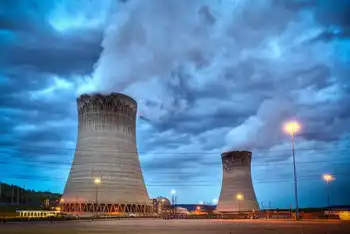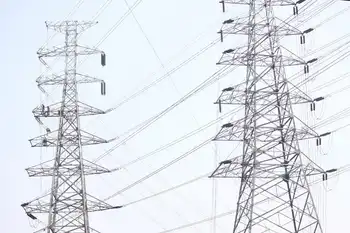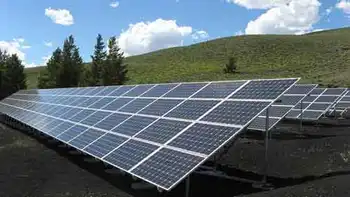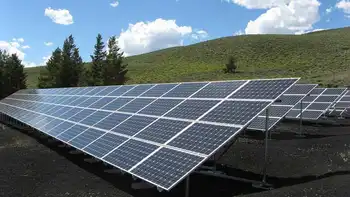Zinc bromide a mass storage solution?
If you lived near the North Pole or Greenland youÂ’d still be a big believer in a warming planet. ThereÂ’s a relative heat wave going on at the top of world, with temperatures way above normal. ItÂ’s part of the Arctic Oscillation which can freeze oranges in Florida but bring a kind of balmy weather to Labrador, Canada.
In the UK, where there has been unusual snow, there has also been less wind. Slower wind speeds mean less electric output from wind turbines and a greater reliance on energy from other sources. Winter wonÂ’t last forever and eventually power output from wind farms will get back to normal.
But what happens 10 years from now when Britain, as planned, gets 25 percent of its electricity from wind? What happens then if another Arctic Oscillation sets in? Will people freeze in the dark? Idle fossil power plants could be fired up if they hadnÂ’t been torn down, but big power plants donÂ’t come on with the throw of switch or the turn of a key.
Britain's potential future problems are likely to be echoed elsewhere in the world and stem back to the core problem of intermittent renewables like wind and solar energy: Power is available only when the wind blows or the sun shines. A snow-covered solar array wonÂ’t provide any electricity.
The solution, of course, is easy to type into a computer: Intermittent renewables need to be built with energy storage as standard equipment. The real world isnÂ’t so easy.
Energy storage can be in the form a battery array as big as a Wal-Mart. Or, somewhat smaller devices powerful enough to keep a neighborhood humming could be employed. Homeowners could get in on the act with a home energy storage device with a few days power. Some are talking about using the battery of an electric or plug-in hybrid car to supply electricity to the grid as needed. (Car batteries could also be used as back-up or emergency power for homes as well.)
The trouble with electric energy storage is that itÂ’s generally not cheap. However, increased utilization of intermittent renewable energy can help offset the additional cost: wind power generated late at night, saved and sold later, would help pay for the energy storage devices, for instance. While with current electric energy storage technologies the sale of stored electricity may or may not pay for the storage capacity, the balance sheet would lean toward a positive territory the cheaper energy storage gets.
There are certainly all kinds of battery electrochemistries worth watching, but one that might take center stage soon is zinc-bromide (or zinc bromine) flow battery technology.
Developed by Exxon in the 1970s, the technology is basically a zinc electroplating machine. In the charging state metallic zinc is plated onto conductive electrodes from zinc suspended in electrolyte solution that is being pumped through the machine. In discharge mode freshly plated electrodes electrochemically react with each other to provide electricity. The zinc-bromide solution is endlessly reused, pumped to and from internal tanks.
There are no toxic or hazardous materials in the devices. Every component is typically fully recyclable and the devices can be refurbished as needed.
A core reason why zinc-bromide devices could be considerably less expensive than other batteries is that the component materials are common and cheap. The battery cells are made of plastic. Zinc is readily available and used in everything from skin lotion to the galvanized coating on nails to keep them from rusting. Bromine, the oxidizing component in the electrolyte solution, is used in various compounds in anything from flame retardants to the manufacture of soft drinks.
Built for stationary use only, zinc-bromide devices donÂ’t have to be light in weight or small in dimension. Engineering and designing light, powerful and compact batteries for electric cars has likely added to their cost. Size and heft are lesser concerns for a zinc-bromine device that would be parked permanently in the basement of a house or bolted to a slab at a grid substation. A 50 kilowatt unit from ZBB Energy weighs in at 3,200 lbs and has a footprint of 4 feet by 4 feet and a height of 6.5 feet.
Giving a general idea of the cost of zinc-bromine products, Premium Power, says that its TransFlow 2000 systems are roughly equivalent in cost to pumped hydro energy storage, at less than 2 cents per kilowatt hour, on a long-term basis. The company says the device has a life expectancy of 30 years. That seems inexpensive and long-lived.
There are at least three companies developing the technology: Premium Power and its Zinc Flow Technology, ZBB Energy Corporation with its Zinc Energy Storage System (ZESS), and RedFlow Technologies with its Zinc Bromine Module (ZBM). (There may be other companies. It's a big world out there.)
ZBB, with U.S. headquarters in Menomonee Falls, Wisconsin, was recently approved by the Internal Revenue Service (IRS) to receive a $14,685,000 Advanced Energy Manufacturing tax credit under the American Reinvestment and Recovery Act, a.k.a. the stimulus package. The tax credit will enable ZBB to install $49.55 million worth of equipment in a facility ZBB has proposed to construct in Southeastern Wisconsin. When ZBB proceeds with this project, it will manufacture its ZESS and PECC energy storage products that store energy from renewable power sources.
Premium Power, of North Reading, Massachusetts, and its utility partners National Grid and Sacramento Municipal Utility District (SMUD) along with Science Applications International Corporation (SAIC) will receive a $7.32 million grant under the Recovery Act to run a three-year project that incorporates the fleet control engineering, manufacturing and installation of seven 500-kilowatt/6-hour energy storage systems. The systems will be installed in Sacramento, California, Everett, Massachusetts, and Syracuse, New York beginning in the third quarter of 2010.
RedFlow, of Brisbane, Australia has recently hired a representative to begin sales and marketing operations in the U.S. and Canada.
The manufacturers donÂ’t seem to suggest that the devices they are now offering could supply power for a few days, like for a long cold snap. However, a guess is that this technology could be scaled to provide power for as long as necessary.
Related News
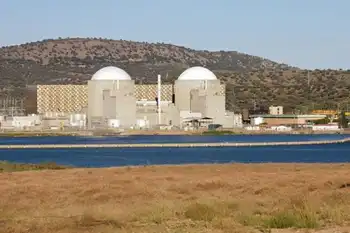
Coalition pursues extra $7.25B for DOE nuclear cleanup, job creation
WASHINGTON - A bloc of local governments and nuclear industry, labor and community groups are pressing Congress to provide a one-time multibillion-dollar boost to the U.S. Department of Energy Office of Environmental Management, the remediation-focused Savannah River Site landlord.
The organizations and officials -- including Citizens For Nuclear Technology Awareness Executive Director Jim Marra and Savannah River Site Community Reuse Organization President and CEO Rick McLeod -- sent a letter Friday to U.S. House and Senate leadership "strongly" supporting a $7.25 billion funding injection, arguing it "will help reignite the national economy," help revive small businesses and create thousands of new…


